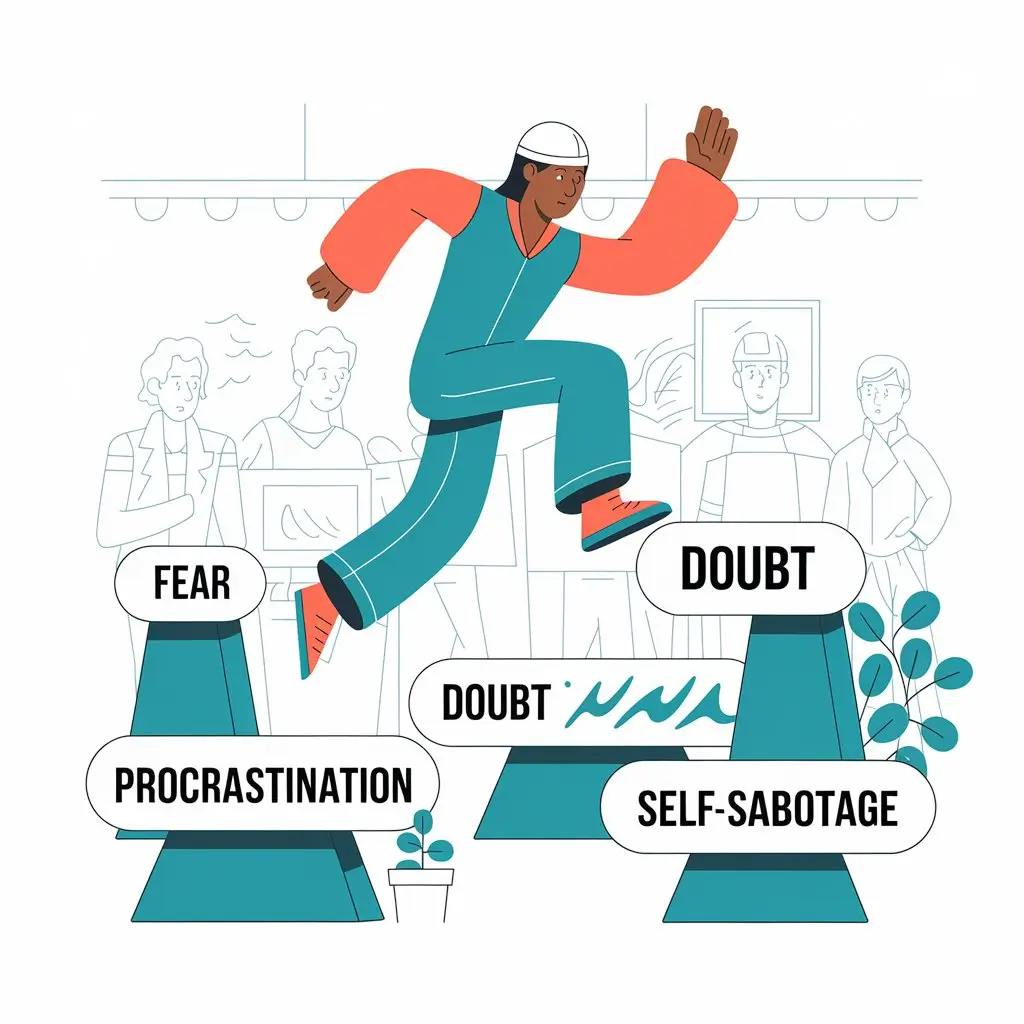Life is full of changes, and transitions are a natural part of the human experience. Whether it’s starting a new job, moving to a new city, ending a relationship, or becoming a parent, these changes can evoke a wide range of emotions, including excitement, anxiety, and uncertainty. Coping with life transitions is essential for maintaining mental well-being and can lead to personal growth and resilience. In this article, we will explore strategies to help navigate these transitions effectively.
Understanding Life Transitions
Life transitions are significant changes that alter our circumstances and can impact our emotional and psychological well-being. Understanding these transitions is crucial for effective coping and personal growth. They can be categorized into two main types: planned transitions and unplanned transitions.
Planned Transitions
Planned transitions are those changes that we anticipate and prepare for. These events often align with societal milestones and personal goals. Examples include:
- Graduation: Completing education and entering the workforce is a major transition. It can bring excitement about new opportunities but also anxiety about job prospects and adult responsibilities.
- Marriage: The decision to marry involves not only emotional commitment but also practical considerations, such as merging finances and establishing a shared life.
- Parenthood: Becoming a parent is a profound transition that brings immense joy but also significant challenges, including sleepless nights and the responsibility of caring for a new life.
- Retirement: Leaving the workforce can be both liberating and unsettling. While it offers freedom, it may also lead to feelings of loss of identity and purpose.
Although these transitions are planned, they can still evoke a complex mix of emotions. Anticipation of change can create stress, as individuals may question their readiness or the implications of the transition on their lives.
Unplanned Transitions
Unplanned transitions occur unexpectedly and can be particularly disruptive. These changes can arise from various circumstances, such as:
- Job Loss: Losing a job can trigger feelings of insecurity and inadequacy. It may lead to financial strain and uncertainty about the future.
- Divorce or Relationship Breakup: The end of a significant relationship can bring about profound grief, loneliness, and uncertainty, requiring individuals to reassess their lives and identities.
- Illness or Injury: A sudden health crisis can drastically change one’s lifestyle and future plans. Coping with physical limitations or the emotional impact of illness can be overwhelming.
- Death of a Loved One: Grieving the loss of someone close can be one of the most challenging transitions. It often requires individuals to navigate feelings of sadness, anger, and confusion.
Unplanned transitions can feel like a loss of control, leading to heightened anxiety and emotional turmoil. The sudden nature of these changes may leave individuals feeling unprepared and unsure of how to move forward.
Common Features of Life Transitions
Despite the differences between planned and unplanned transitions, several common features often emerge:
- Adjustment Period: Transitions typically require an adjustment period during which individuals adapt to new circumstances. This period can vary in length and intensity depending on the nature of the change.
- Identity Reassessment: Transitions often prompt individuals to reevaluate their identities. For example, moving from being a student to a professional or from being single to married involves shifts in self-perception and roles.
- Emotional Rollercoaster: Both planned and unplanned transitions can elicit a wide range of emotions, from excitement to fear. It’s normal to experience conflicting feelings as individuals navigate the complexities of change.
- Opportunity for Growth: While challenging, transitions can also present opportunities for personal growth and development. They often encourage individuals to step outside their comfort zones, fostering resilience and new skills.
Common Emotional Responses
Life transitions evoke a wide array of emotional responses, and understanding these feelings is essential for navigating change effectively. Each individual’s reaction can vary significantly based on personal circumstances, resilience, and support systems. Here are some common emotional responses that people experience during life transitions:
1. Anxiety
Anxiety is one of the most prevalent emotional responses to life transitions. The uncertainty associated with change, whether it’s starting a new job, moving to a different city, or ending a long-term relationship, can trigger feelings of worry and fear. Common sources of anxiety during transitions include:
- Fear of the Unknown: The unpredictability of what lies ahead can lead to anxiety about potential outcomes. Questions about whether one will succeed in a new role or how relationships will change can create a sense of dread.
- Pressure to Perform: Transitions often come with expectations, either self-imposed or from external sources. The pressure to excel in a new job or meet new social obligations can heighten feelings of anxiety.
- Overthinking: Individuals may find themselves ruminating on worst-case scenarios, amplifying their anxiety and making it harder to focus on the present.

2. Sadness
Sadness is a natural response to change, particularly when it involves loss. Transitions often require letting go of the familiar, which can evoke feelings of grief. This sadness can manifest in several ways:
- Loss of Identity: Changes, such as retiring or becoming a parent, can lead to a profound sense of loss regarding one’s previous identity. Individuals may mourn the aspects of their lives that are changing or disappearing.
- Nostalgia: Reflecting on past experiences can bring about feelings of longing for what once was. This nostalgia can be bittersweet, as individuals may reminisce about happier times while grappling with the reality of change.
- Grief for Unmet Expectations: Transitions may not unfold as anticipated, leading to disappointment and sadness over lost dreams or unfulfilled aspirations.
3. Excitement
Despite the challenges associated with transitions, they can also bring excitement and hope. This positive emotional response often arises from the potential for new experiences and opportunities:
- New Beginnings: Transitions often signal the start of something fresh. For instance, starting a new job can bring excitement about meeting new colleagues and tackling new challenges.
- Personal Growth: Embracing change can lead to self-discovery and personal development. The thrill of stepping outside one’s comfort zone can be invigorating and motivating.
- Optimism for the Future: The prospect of new opportunities can foster a sense of hope and optimism, encouraging individuals to envision a brighter future.
4. Confusion
Confusion is a common emotional response during transitions, particularly when individuals face multiple changes simultaneously or are unsure about how to navigate their new circumstances:
- Overwhelm: The sheer volume of changes can be overwhelming, leading to difficulty in processing emotions and making decisions. Individuals may feel lost, not knowing which direction to take.
- Identity Crisis: As individuals reassess their identities in light of new roles or circumstances, they may experience confusion about who they are and what they want moving forward.
- Difficulty in Decision-Making: Uncertainty during transitions can lead to paralysis in decision-making. Individuals may struggle to determine the best course of action, causing frustration and further confusion.
5. Relief
In some cases, transitions can also bring a sense of relief, particularly when individuals are moving away from negative situations:
- Ending Toxic Relationships: Leaving a challenging or unhealthy relationship can provide a sense of relief and freedom, allowing individuals to reclaim their happiness.
- Escaping Unfulfilling Jobs: Transitioning from a job that no longer serves one’s goals can lead to relief and renewed motivation, paving the way for new opportunities.
- Closure: Some transitions mark the end of a chapter, providing closure that can be emotionally liberating and allow individuals to move forward.
Recognizing and Accepting Emotions
It’s crucial to recognize that experiencing a mix of these emotions is entirely normal during life transitions. Accepting these feelings rather than suppressing them can lead to healthier coping mechanisms. Acknowledging and validating one’s emotional responses can foster self-compassion and facilitate the healing process.
Strategies for Coping
Navigating life transitions can be challenging, but employing effective coping strategies can help ease the process and promote resilience. Here are several strategies that individuals can adopt to cope with the emotional and psychological challenges that arise during transitions:
1. Acknowledge Your Feelings
Recognizing and validating your emotions is the first step in coping with transitions. Allow yourself to feel whatever you are experiencing, whether it’s anxiety, sadness, excitement, or confusion. Here are some ways to acknowledge your feelings:
- Journaling: Writing down your thoughts and emotions can provide a safe space to express what you’re going through. Journaling helps clarify feelings and can reveal patterns in your emotional responses.
- Talking it Out: Sharing your feelings with a trusted friend or family member can provide emotional relief. Sometimes, vocalizing your thoughts can help you gain perspective and feel less isolated.
- Mindfulness Practices: Engaging in mindfulness techniques, such as meditation or deep breathing, can help you become more aware of your emotions without judgment, allowing you to process them more effectively.
2. Seek Support
During alterations in life people find tremendous value in receiving support from others. Building a robust support network can provide comfort, reassurance, and practical assistance. Here are some ways to seek support:
- Contact your nearest relatives and friends for support. They can offer emotional support, practical help, or simply a listening ear.
- Support Groups: Consider joining a support group related to your specific transition (e.g., divorce support, job loss support). These groups provide a sense of community and shared experience.
- Professional Help: If feelings of anxiety or depression become overwhelming, seeking help from a mental health professional can provide coping strategies tailored to your needs.

3. Establish a Routine
Creating a daily routine can provide structure and stability during periods of uncertainty. A routine can help ground you and give you a sense of normalcy. Here are some tips for establishing a routine:
- Daily Schedule: Outline a daily schedule that includes time for work, self-care, and leisure activities. This organization system helps both time management and controls senseless mental chaos.
- Incorporate Self-Care: Make time for self-care activities, such as exercise, hobbies, or relaxation techniques. Prioritizing self-care is essential for maintaining mental health during transitions.
- Set Regular Check-Ins: Schedule regular check-ins with yourself to assess how you’re feeling and make necessary adjustments to your routine.
4. Focus on What You Can Control
During transitions, it’s easy to feel overwhelmed by factors outside your control. Focusing on what you can influence can empower you and reduce feelings of helplessness:
- Identify Actionable Steps: Break down the transition into manageable parts and identify specific actions you can take. For example, if you’re starting a new job, research the company, connect with future colleagues, or set goals for your first month.
- Practice Problem-Solving: When faced with challenges, brainstorm potential solutions. This proactive approach can help you feel more in control and less anxious.
- Limit Exposure to Negativity: Reduce exposure to negative influences, whether they are people, media, or environments. Surround yourself with positivity and encouragement.
5. Practice Mindfulness
Mindfulness practices can help ground you in the present moment, reducing anxiety and promoting emotional regulation. Here are a few ways to consolidate mindfulness into your everyday life:
- Dedicate yourself to a brief daily period for engaging in meditation practices. Devote your attention to your breathing while viewing your thoughts without placing any judgment on them.
- Perform deep breathing exercises which assist in reducing nervous system tension. Breathe through your nose for a few seconds while holding in your breath before releasing it out of your mouth.
- Mindful Movement: Activities like yoga, tai chi, or even walking can be practiced mindfully. Focus on the sensations of movement and your surroundings to enhance your connection to the present.
6. Embrace Flexibility
Flexibility is crucial during transitions, as plans may change and unexpected challenges may arise. Cultivating a flexible mindset can help you adapt more easily:
- Stay Open to Change: Accept that change is a part of life, and be willing to adjust your expectations and plans as needed. Embracing uncertainty can lead to new opportunities.
- Reframe Challenges: Instead of viewing obstacles as setbacks, try to see them as opportunities for growth. Reframing challenges can foster resilience and a positive outlook.
- Practice Self-Compassion: Be kind to yourself during difficult times. Acknowledge that it’s okay to struggle and that you’re doing your best in a challenging situation.
7. Reflect on Past Transitions
Reflecting on previous transitions can provide valuable insights into your resilience and coping abilities. Consider the following:
- Identify Strengths: Think about the strengths and skills you used to navigate past transitions successfully. Recognizing your abilities can boost your confidence in handling current challenges.
- Learn from Experience: Reflect on what worked and what didn’t during past transitions. Use these lessons to inform your approach to current changes.
- Celebrate Progress: Acknowledge how far you’ve come since previous transitions. Celebrating small victories can foster a sense of accomplishment and motivation.
8. Set Realistic Goals
Setting achievable goals can provide direction and purpose during transitions. Here’s how to establish meaningful goals:
- Break Goals into Smaller Steps: Instead of overwhelming yourself with large goals, break them down into smaller, manageable tasks. This approach makes it easier to track progress and stay motivated.
- Prioritize Goals: Determine which goals are most important to you during this transition period. Focus on a few key objectives rather than spreading yourself too thin.
- Be Flexible with Goals: Understand that goals may need to be adjusted as circumstances change. Being adaptable allows you to remain focused while still accommodating new realities.
9. Seek Professional Help
If you find that coping with a life transition is becoming increasingly difficult, seeking professional help can be a vital step:
- Therapy: A mental health professional can provide support, coping strategies, and a safe space to discuss your feelings. Therapy can help you gain insights into your emotional responses and develop effective coping mechanisms.
- Workshops and Seminars: Many organizations offer workshops on coping with life transitions. These can provide valuable tools and connect you with others going through similar experiences.
- Online Resources: Explore online platforms that offer mental health resources, including therapy options, articles, and support communities.
Conclusion
Coping with life transitions can be challenging, but with the right strategies and support, you can navigate these changes successfully. Remember that it’s normal to experience a range of emotions during transitions, and seeking help is a sign of strength. By acknowledging your feelings, establishing routines, and focusing on what you can control, you can turn these challenging times into opportunities for growth and resilience. Embrace the journey, and know that you have the strength to adapt and thrive.


























